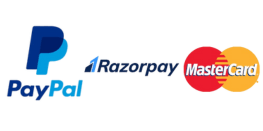
Chemotherapy Induced Nausea and Vomiting (CINV) Drugs Market Research Report Administration Route (Oral, Intravenous (IV), Subcutaneous/Transdermal), By Indication Type(Acute CINV, Delayed CINV, Anticipatory CINV, Breakthrough CINV), By End-User (Hospital/Clinics, Home Care),by Drug Type (Generic Drugs, Branded Drugs) and by Region- Global Forecast to 2034
June-2025 Formats | PDF | Category: Pharma | Delivery: 24 to 72 Hours
“The Chemotherapy Induced Nausea and Vomiting (CINV) Drugs Market industry is expected to expand from 3.89 Billion in 2025 to $ 6.34 Billion in 2034, with a compound annual growth rate of 5.3% “
Chemotherapy Induced Nausea and Vomiting (CINV) Drugs Market: Overview and Growth in the Upcoming Year
In order to mitigate one of the most distressing side effects of cancer treatment, the market for chemotherapy-induced nausea and vomiting (CINV) drugs is an essential component of supportive care in oncology. The best management of acute and delayed CINV is often provided by a combination of pharmacological treatments, including corticosteroids, neurokinin-1 (NK1) receptor antagonists, 5-HT3 receptor antagonists, and cannabinoids. The goals are to improve the quality of life for patients, ensure adherence to treatment, and prevent issues like malnourishment and dehydration.
This market is expanding due to a number of causes. The most important factor is the growing incidence of cancer worldwide, as more patients need efficient antiemetic treatments. The effectiveness of treatment is being improved by developments in antiemetic medication development, such as the introduction of stronger, more recent drugs and fixed-combination regimens like NEPA (netupitant and palonosetron). Higher adoption rates of these medications are also a result of patients’ and healthcare providers’ growing understanding of the significance of comprehensive CINV therapy.
A growing focus on personalised medicine, in which treatment plans are customised to each patient’s risk factors and genetic profile, is one of the major trends influencing the CINV medication market. Combination antiemetic treatments, which target several pathways implicated in nausea and vomiting, are increasingly being used as the standard of care, particularly for chemotherapy that is extremely emetogenic. Additionally, telemedicine services and digital health tools are increasingly being integrated for remote patient monitoring and symptom reporting, which enhances patient adherence and engagement.
The market for Chemotherapy Induced Nausea and Vomiting (CINV) Drugs has some obstacles in spite of its encouraging rise. In certain areas, access to sophisticated antiemetic medications may be hampered by their high cost, especially for novel NK1 receptor antagonists. Research for better solutions must continue because of the emergence of medication resistance and the different ways that patients react to current treatments. Furthermore, the market earnings of innovative firms may be impacted by the availability of generic substitutes for certain well-known drug classes.
For Insights Consultancy’s latest market intelligence study, “Global Chemotherapy Induced Nausea and Vomiting (CINV) Drugs Market 2025, Growth Opportunities, and Forecast,” provides a comprehensive analysis of the Food industry. The report includes demand analysis, industry insights, competition intelligence, and a customer database. It also offers strategic insights into future trends, growth determinants, supplier landscape, demand landscape, CAGR, and pricing analysis. The study also includes Porter’s Five Forces Analysis, PESTLE Analysis, Value Chain Analysis, 4 Ps’ Analysis, Market Attractiveness Analysis, BPS Analysis, and Ecosystem Analysis.
*Note: Sample of the report provides details on the scope and coverage, table of contents, research methodology, and Sample Framework of the report. Actual report of 110+ is available for purchase to all the interested stakeholders.
Chemotherapy Induced Nausea and Vomiting (CINV) Drugs Market Key Takeaways
Regional Contribution to Market in 2024:
The market for chemotherapy-induced nausea and vomiting (CINV) drugs is a thriving area of supportive care in oncology, propelled by developments in antiemetic treatments and the rising incidence of cancer worldwide.
Fastest Growing Region and Leading Region:
In 2024, the largest share of the CINV drug market was in North America. This dominance can be attributed to a number of factors, including high cancer incidence rates, an advanced healthcare system, significant healthcare spending, and the early adoption of novel treatments. The United States, in particular, contributes significantly to this portion because to its robust healthcare system and high expenditure on cancer treatment.
The market for CINV Drugs is expected to increase at the quickest rate in the Asia-Pacific (APAC) region in the years to come. The primary causes of this expansion are rising cancer prevalence, improved access to healthcare, rising disposable incomes, and increased awareness of comprehensive cancer care in countries like China, Japan, and India.
Market Breakdown by Type:
5-HT3 Receptor Antagonists: In 2024, these medications, which include ondansetron, granisetron, dolasetron, and palonosetron, dominated the market. They successfully prevent acute CINV by inhibiting serotonin receptors in the brain and stomach. Their substantial market share is a result of their extensive use and largely manageable side effect profile.
Antagonists of the neurokinin-1 (NK1) receptor: Particularly when used with other antiemetics, this class of medications—which includes aprepitant, fosaprepitant, and rolapitant—is very effective in avoiding both acute and delayed CINV. Because of their exceptional effectiveness in managing CINV holistically, NK-1 receptor antagonists are becoming more and more in demand.
Fastest Growing Sub-Segment:
The Neurokinin-1 (NK1) receptor antagonists sub-segment is anticipated to increase significantly during the forecast period, despite 5-HT3 receptor antagonists holding the biggest share in 2024. This is because of continuous improvements in their formulations and their increased effectiveness in treating both acute and delayed CINV, especially in combination therapy.
Key Applications (2024 Market Share):
Chemotherapy is intimately linked to the main use of CINV medications. The market for antiemetics pharmaceuticals as a whole was dominated by the chemotherapy category in 2024, demonstrating the vital role CINV medications play in cancer treatment. These medications are crucial for controlling nausea and vomiting brought on by different emetogenic chemotherapy treatments.
Fastest Growing Application (Forecast Period 2025 to 2034)
The post-operative nausea and vomiting (PONV) market for antiemetics, including CINV medications, is expected to grow significantly during the forecast period (2025-2030, possibly until 2034), driven by increasing surgical procedures and patient comfort. The primary driver is chemotherapy, which is used to treat severe and delayed CINV.
Report Attributes
Metric | Details |
Market Size in 2025 | USD 3.89 Billion |
Projected Market Size in 2034 | USD $ 6.34 Billion |
CAGR (2025 – 2034) | 5.3% |
Market Segmentation | By Application, by End-User, and By Region |
Top Key Players | Heron Therapeutics, Inc., Pfizer, Inc., GlaxoSmithKline plc, Eisai Co., Ltd., Novartis AG, Sanofi S.A., Teva Pharmaceutical Industries Ltd., Bristol-Myers Squibb Company Merck & Co., Inc., Helsinn Healthcare S.A. |
Customization Scope | Report customization (equivalent to up to 4 analyst’s working days) with purchase. Addition or alteration to country, regional & segment scope. |
Top Companies Covered In This Report:
The Chemotherapy Induced Nausea and Vomiting (CINV) Drugs Market’s competitive environment provides a thorough examination of the major participants. Company summaries, financial results, revenue generation, market potential, R&D expenditures, new market strategies, regional presence, strengths and weaknesses, product launches, product range, and application leadership are some of the data it contains. These statistics particularly relate to the businesses’ operations and areas of concentration in the Chemotherapy Induced Nausea and Vomiting (CINV) Drugs market.
- Heron Therapeutics Inc.
- Pfizer Inc.
- GlaxoSmithKline plc
- Eisai Co. Ltd.
- Novartis AG
- Sanofi S.A.
- Teva Pharmaceutical Industries Ltd.
- Bristol-Myers Squibb Company Merck & Co. Inc.
- Helsinn Healthcare S.A.
Industry News
05/06/2025 Heron Therapeutics Announces First Quarter 2025 Financial Results and Highlights Recent Corporate Updates
CARY, N.C., May 6, 2025 — Heron Therapeutics, Inc. (Nasdaq: HRTX) (“Heron” or the “Company”), a commercial-stage biotechnology company, today announced financial results for the three months ended March 31, 2025, and highlighted recent corporate updates.
Detailed Segmentation and Classification of the report (Market Size and Forecast – 2034, Y-o-Y growth rate, and CAGR):
Segment ByAdministration Route
- Oral
- Intravenous (IV)
- Subcutaneous/Transdermal)
Segment by Drug Type
- Generic Drugs
- Branded Drugs
Segment by Indication Type
- Acute CINV
- Delayed CINV
- Anticipatory CINV
- Breakthrough CINV
Segment by End-User
- Hospital/Clinics
- Home Care
Regional Deep-dive Analysis:
The report provides in-depth qualitative and quantitative data on the Chemotherapy Induced Nausea and Vomiting (CINV) Drugs Market for all of the regions and countries listed below:
North America
United States
The United States is the largest market for CINV medications in North America due to factors like high cancer incidence and chemotherapy patients. The country’s established healthcare system facilitates the adoption of new antiemetic medications like NK1 and 5-HT3 receptor antagonists. The US’s supportive regulatory framework and robust research efforts by large pharmaceutical companies further support the development of improved therapies. The widespread availability of these drugs is further reinforced by high healthcare costs and extensive insurance coverage.
Canada
A growing focus on supportive care in oncology and an increase in healthcare professionals’ understanding of the most effective ways to manage CINV are two factors that set the Canadian market for CINV medications apart. Drug availability may be impacted by pricing and reimbursement policies, but the nation’s universal healthcare system guarantees broad access to medications. Similar to the US, Canada is seeing a rise in cancer cases, which is increasing the need for effective antiemetic medications. The market offers a variety of antiemetic classes, and combination therapies are frequently employed to treat both acute and delayed CINV. Continued investments in cancer research and clinical trials are also responsible for the market’s steady growth.
Mexico
Mexico’s CINV drug market is a relatively new but rapidly growing industry in North America. Better healthcare infrastructure, increased public awareness of cancer and its treatment, and rising healthcare costs are all contributing to the market’s growth, even though it is still smaller than its northern counterparts. The need for CINV drugs is being driven by the increasing number of cancer diagnoses and the subsequent chemotherapy treatments. Serotonin-receptor antagonists are currently the most profitable pharmacological class in Mexico’s antiemetics market. The market is expanding as a result of the rise in global pharmaceutical corporations and the increased focus on enhancing patients’ quality of life while undergoing cancer treatment. Generic versions of CINV drugs also have a big impact on market accessibility given shifting economic conditions.
Asia-Pacific
China
China has a significant share of the Asia-Pacific market and has played a significant role in the rapid growth of the CINV medications industry. Given the high number of patients undergoing chemotherapy and the country’s rising cancer rate, there is a significant need for antiemetic treatments. Government initiatives to raise healthcare costs and accessibility, along with a growing focus on comprehensive cancer care, are driving market expansion. Despite the widespread use of generic 5-HT3 receptor antagonists, novel NK1 receptor antagonists and combination medications are gaining popularity as healthcare standards rise and people look for more efficient CINV management. Furthermore, more money is being spent by regional pharmaceutical companies on the creation and manufacturing of CINV drugs.
India
India’s large and growing population, rising cancer rates, and evolving healthcare landscape are all contributing to the country’s rapidly growing CINV drug market. The expanding middle class and rising disposable incomes are making better medical facilities and treatments, such as state-of-the-art antiemetic drugs, more widely available. In the Indian market, generic drugs are necessary due to cost considerations; however, branded, more potent treatments are gradually taking their place for improved CINV control. The continued demand for CINV medications is being fueled by the expansion of oncology centres and initiatives to increase public awareness of cancer and early detection.
Japan
Japan has a developed but continuously growing market for CINV medications in the Asia-Pacific area. The nation’s ageing population is primarily to blame for the high incidence of cancer in the country, which leads to a constant need for supportive care and chemotherapy. The quality of life for cancer patients is highly valued in Japan’s highly developed healthcare system. High-end CINV treatments, including well-known 5-HT3 and NK1 receptor antagonists and more recent fixed-dose combos, are therefore frequently used. A strong regulatory framework and strong research and development by domestic pharmaceutical companies ensure the availability of innovative and effective CINV therapies.
Europe
Germany
Germany is one of the largest markets for CINV drugs in Europe because of the country’s high rate of cancer diagnoses and emphasis on comprehensive cancer care. The German healthcare system ensures widespread access to a range of antiemetic treatments, including both well-known and recently developed medications, thanks to its robust pharmaceutical industry and significant healthcare spending. To maximise efficacy, combination antiemetic regimens are frequently employed. Because of continuous clinical research and a proactive supportive care approach, the market for CINV medications is growing steadily in this area.
France
With a focus on cancer patient care, France has a substantial market for CINV drugs. The country’s advanced healthcare system and relatively high healthcare spending encourage the use of advanced antiemetic techniques. According to national and international guidelines for CINV prevention, French oncologists commonly combine corticosteroids, NK1 receptor antagonists, and 5-HT3 receptor antagonists. The market is still growing because of the rising incidence of cancer and the need to lessen treatment side effects.
United Kingdom
The UK’s CINV medicine market is significantly influenced by the National Health Service (NHS), which provides universal access to pharmaceuticals, as well as a substantial cancer patient population. Cost-effectiveness plays a role in drug selection, but it is widely acknowledged that CINV management is important for patient health and treatment compliance. Market adoption of guidelines-recommended therapies is widespread, and efforts are being made to improve treatment outcomes by increasing patient education about self-administration of antiemetics. In the UK, clinical research is also carried out, which helps develop new CINV treatments.
Italy
The market for CINV drugs is impacted by Italy’s significant cancer burden and efforts to improve supportive care. Although regional variations in CINV management strategies may result from the decentralised nature of the healthcare system, effective CINV control is generally recognised to have both clinical and financial benefits. The market exhibits a consistent need for antiemetic drugs in addition to a propensity for combination therapy optimisation in an effort to reduce the incidence and severity of CINV. Research on the cost-effectiveness of CINV therapy also influences trends in drug prescription.
Middle East and Africa
Saudi Arabia
Saudi Arabia, the biggest pharmaceutical market in the Middle East, is a major player in the CINV drug market in the MEA region. The incidence of cancer is rising in the country despite large government investments in oncology services and healthcare facilities, including the establishment of new cancer centres. This robust support system and expanding understanding of supportive care are driving the need for CINV medications. There are several antiemetic classes on the market, and using international best practices for CINV care is becoming more and more important in an effort to improve patient outcomes.
UAE
The market for CINV medications is growing rapidly because of the UAE’s status as a healthcare hub, an increase in medical tourism, and a strong government commitment to enhancing healthcare services. The increasing incidence of cancer and the focus on providing excellent oncology care are driving the need for innovative antiemetic therapies. A significant portion of the UAE’s supply of CINV medications comes from the importation of innovative, well-known products, and the country’s pharmaceutical sector is well-regulated. The importance of precision medicine and tailored treatment plans is growing, and CINV management is no exception.
South Africa
South Africa is a significant market for CINV drugs on the African continent. The high rate of cancer in the country and the ease of access to chemotherapy treatments are the main drivers of the need for antiemetics. Despite using a range of CINV drug classes, 5-HT3 receptor antagonists make up a sizable share of the market. The importance of CINV management in guaranteeing chemotherapy adherence and improving quality of life is becoming more widely recognised, despite the potential influence of cost and accessibility. The growing use of combination medications and the possibility of cannabinoid-based therapy for refractory CINV are emerging themes.
Egypt
Egypt’s large population and growing healthcare expenditures are contributing to the country’s steady growth in the CINV drug market. The rising rate of cancer and the shift to regional pharmaceutical manufacturing are two important factors. The market is impacted by cost sensitivity, but the demand for effective CINV care is rising as more patients receive chemotherapy. Government initiatives to improve healthcare access and rising medical professional awareness of CINV’s impact on patient health are driving market expansion.
The research provides answers to the following key questions:
- What is the expected growth rate of the Chemotherapy Induced Nausea and Vomiting (CINV) Drugs Market from 2025-2034?
- What are the key driving forces shaping the market during the forecast period?
- Who are the major market vendors and what winning strategies have helped them occupy a strong foothold in the Chemotherapy Induced Nausea and Vomiting (CINV) Drugs Market?
- What are the prominent market trends influencing the market’s development?
Key insights provided by the report that could help you take critical strategic decisions?
- Regional reports analyse product/service consumption and market factors in each region.
- Reports highlight possibilities and dangers for suppliers in the Chemotherapy Induced Nausea and Vomiting (CINV) Drugs Market business globally.
- The report identifies regions and sectors with the highest growth potential.
- It provides a competitive market ranking of major companies, as well as information on new product launches, partnerships, business expansions, and acquisitions.
- The report includes a comprehensive corporate profile with company overviews, insights, product benchmarks, and SWOT analysis for key market participants.
Customization: We can provide following things
1) On request more company profiles (competitors)
2) Data about particular country or region
3) We will incorporate the same with no additional cost (Post conducting feasibility).
Any Requirement Contact us: https://forinsightsconsultancy.com/contact-us/
Table of Contents
For TOC Contact us: https://forinsightsconsultancy.com/contact-us/







